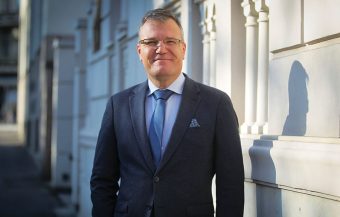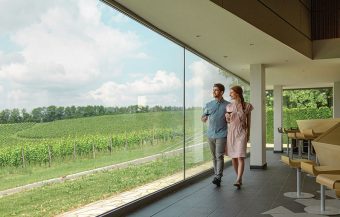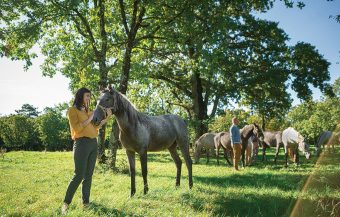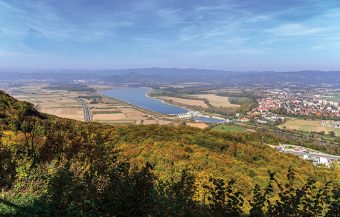
One of the smallest but greenest countries in the European Union – Slovenia – very quickly adopted European standards and achieved a high level of environmental protection. According to the report of the American universities Yale and Columbia, which, with the help of their EPI index, assessed how close countries were to accomplishing the established environmental policy goals, Slovenia has always been at the top of the world, most often among the top 20 countries, along with Finland, Denmark, the United Kingdom, and Austria.
H.E. Mr Damjan Bergant, Ambassador of the Republic of Slovenia to Serbia, says that Slovenia regularly ranks high on quality of life by relevant scientific and international organizations. This is partly attributed to the country’s preserved nature, which is its great asset as it provides clean water, air, quality food and various opportunities for relaxation and recreation. Slovenia invests a lot in nature conservation, with funds allocated for that purpose significantly increasing since the country became a full-fledged EU member. The Ambassador points out that environmental protection is comprehensively regulated by the Law on Environmental Protection, which, together with the Law on Nature Conservation and the Law on Water, forms the basis of the umbrella state strategy – the National Environmental Protection Programme. Slovenia has been trying to ensure that all national strategic and programme documents comply with the 2030 Agenda and contribute to accomplishing the 17 global sustainable development goals.
Q: You are well on your way to becoming a fully environmentally friendly country. How is ecological transition implemented in one of the greenest countries in the EU? What is the vision for Slovenia’s ecological development based on?
A: If we focus on energy, we are directed towards reducing energy consumption and applying energy efficiency measures at all levels (households, industry and services, public sector, system level and grid loss problems). Also, we strive towards using renewable energy sources (RES). Thus, we have set goals for 2030 – RES’ share in the final energy consumption ranges between 30 and 35 per cent, which we are trying to achieve by implementing various measures.

In 2023, we recorded exceptional growth in the solar power sector, increasing the total capacity from 690 to over 1,100 MW. The growth of solar power plant production capacities in 2023 was the highest per capita compared to all EU countries. Such an increase of about 400MW of additional capacity per year should be maintained yearly to achieve the goal set in the National Energy and Climate Plan, which foresees about 3,500MW of solar power plant capacity by 2030.
However, much still needs to be done, especially regarding the use of wind farms, where we are among the last in the European Union. We also have a lot of problems with spatial planning. Here, we would benefit from having more information about projects and implementation in the Western Balkan countries.
IN FOCUS:
- SOCIAL NETWORKS FROM A DIFFERENT ECO-ANGLE
- SOLVING PROBLEMS WITH HIGHER HARMONICS
- ECOLOGY EMBASSY IN THE CULTURE STREET
Q: What is the structure of energy sources in Slovenia? What is the share of renewable energy sources in the total energy mix, and how will you increase this share in the coming period?
A: Domestic energy production in 2023 was more than 131,000 terajoules (TJ), which is eight per cent less than the previous year. Almost 47 per cent came from nuclear power, 32 per cent from RES, including hydropower, while 21 per cent came from coal. Slovenia met less than half (48 per cent) of its energy needs from domestic sources, while the remaining quantity was imported. Compared to the previous year, energy dependence increased by five percentage points.

Almost 268,000 TJ were available for energy supply, taking into account energy imports and exports. In terms of the energy supply structure, petroleum-based products dominated with over 36 per cent share, followed by nuclear energy (23 per cent) and energy from renewable sources together with hydropower (about 17 per cent), coal (12 per cent) and natural gas (11 per cent).
In the final consumption structure, petroleum-based products dominated with 47 per cent, followed by electricity (23 per cent), RES (14 per cent), natural gas (12 per cent), heat (three per cent) and solid fuels (one per cent).
Q: You are a regional leader in the circular economy. How did you achieve that? Did you apply the practices of other EU countries?
A: Slovenia actively promotes the circular economy principles manifested in the Smart Specialization Strategy. Line ministries are implementing campaigns to boost the circular economy, primarily through the Recovery and Resilience Plan and the 2021-2027 European Cohesion Policy.
Following the Integral Strategic Project for the Decarbonization of Slovenia, we have created a supportive environment to help businesses transition to a low-carbon circular economy and use digital technologies to increase their competitiveness.

We have also launched a public call to encourage decarbonization and the transition to a low-carbon circular economy, which will support enterprise projects in developing sustainable and circular business strategies and implementing new business models. Through the 2021–2027 European Cohesion Policy, we implement measures that contribute to more efficient use of resources and improvement of material productivity. Special attention will be devoted to supporting low-carbon and circular business models and establishing the Circular Economy Centre, which will connect Slovenian stakeholders in this area.
Since 2016, we have had the Strategic Research and Innovative Partnership, an important platform with 94 members, including companies, educational and research institutions, and non-governmental organizations.
Q: More than 60 per cent of the Slovenian territory is covered with forest and green areas. There are also 40 national parks and reserves with over 30,000 species of animals. How much do you invest in biodiversity conservation?
A: Located at the crossroads of the Alpine, Pannonian, Dinaric and Mediterranean bio-geographic regions, we are proud to say that we are one of the most naturally abundant areas. Despite its smaller size (0.004 per cent of the world’s surface), more than 1 per cent of all known living species live here, amounting to over 30,000 species, although estimates range as high as 120,000. Slovenia has the largest share of Natura 2000 areas among all EU members – more than 37 per cent of the country’s total area. Together, various protected areas cover almost half of the country’s size. In the last seven years, we have set aside more than 100 million euros for biodiversity conservation projects, and we allocate 12 million euros from the state budget annually for this purpose, while an additional 5 million euros come from the Forestry and Climate Change Fund. In the 2021–2027 program period, we expect to receive around 130 million euros from EU funds.
Interviewed by: Mirjana Vujadinović Tomevski
Read the story in the new issue of the Energy portal Magazine SUSTAINABLE ARCHITECTURE AND FINANCING OF GREEN CONSTRUCTION



